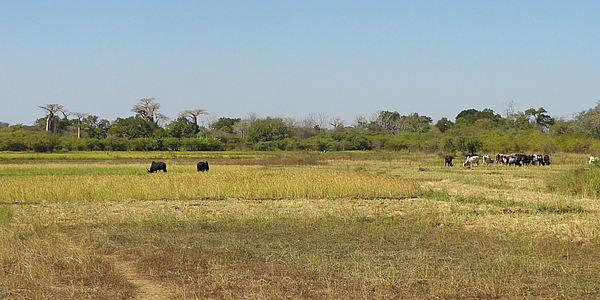


Madagascar's forests are incredibly rich and an absolute must-see during your trip to the Big Island. The island has been separated from the African continent for 140 million years and from India for 80 million years, so the island's species have evolved separately from their continental neighbours and gradually become quite different. As a result of this isolation 85% of the animal and plant species are endemic to the island, that is, unique in the world.
However, most of these species live in forest environments that are threatened today. Although 20% of Madagascar is currently covered by forest, the area diminishes by about 200,000 hectares a year. Some scientists estimate the 4/5th of the forest which once covered the island have already disappeared. You only need to look at the enormous desert plains in certain parts of the country to ask yourself what might happen to the forest in the future.
Certain traditional agricultural practices are being frowned on today as being partly responsible for deforestation. A large part of the people who inhabit Madagascar are nomad agriculturalists and herders who migrate around different parts of the country. So that they can cultivate the ground wherever they settle, these people practice tavy orhatsake.
These slash and burn techniques mean some of the forest has to be cleared and burned as the ashes help to fertilise the soil. After a few seasons of agriculture, the soil becomes impoverished and the families have to clear new parcels, and so it goes on...

However, tavy is not the only cause of massive deforestation in Madagascar. Illegal exploitation of precious wood, which is carried out under the complacent gaze of corrupt politicians, is a real menace for Madagascan forests.
The island's forests are rich in precious species like Rosewood or palisander which are targeted by traffickers who send them all over the world. Whole areas of forest are destroyed so they can get out a few trees that have been cut down illegally to make furniture. So, whatever country you are in, bearing in mind that most of these species are exported, you should avoid buying objects made in precious wood unless they have a certificate proving they have been legally exploited.
There are lots of new initiatives aimed at limiting the deforestation, especially the creation of protected areas and national parks in which ecotourism is helping the villages to develop. By creating employment and giving back part of the parks' entry fees, this form of tourism creates economically viable alternatives to tavy for the local population.
Lots of institutions and associations are also working with the inhabitants to make them aware of the need to protect the environment and find other ways to farm: improving yields, planting different crops...
Lots of people nowadays are speaking out against the trafficking of precious wood in Madagascar. But, unfortunately, although some cargo loads are intercepted, most of them manage to disappear...